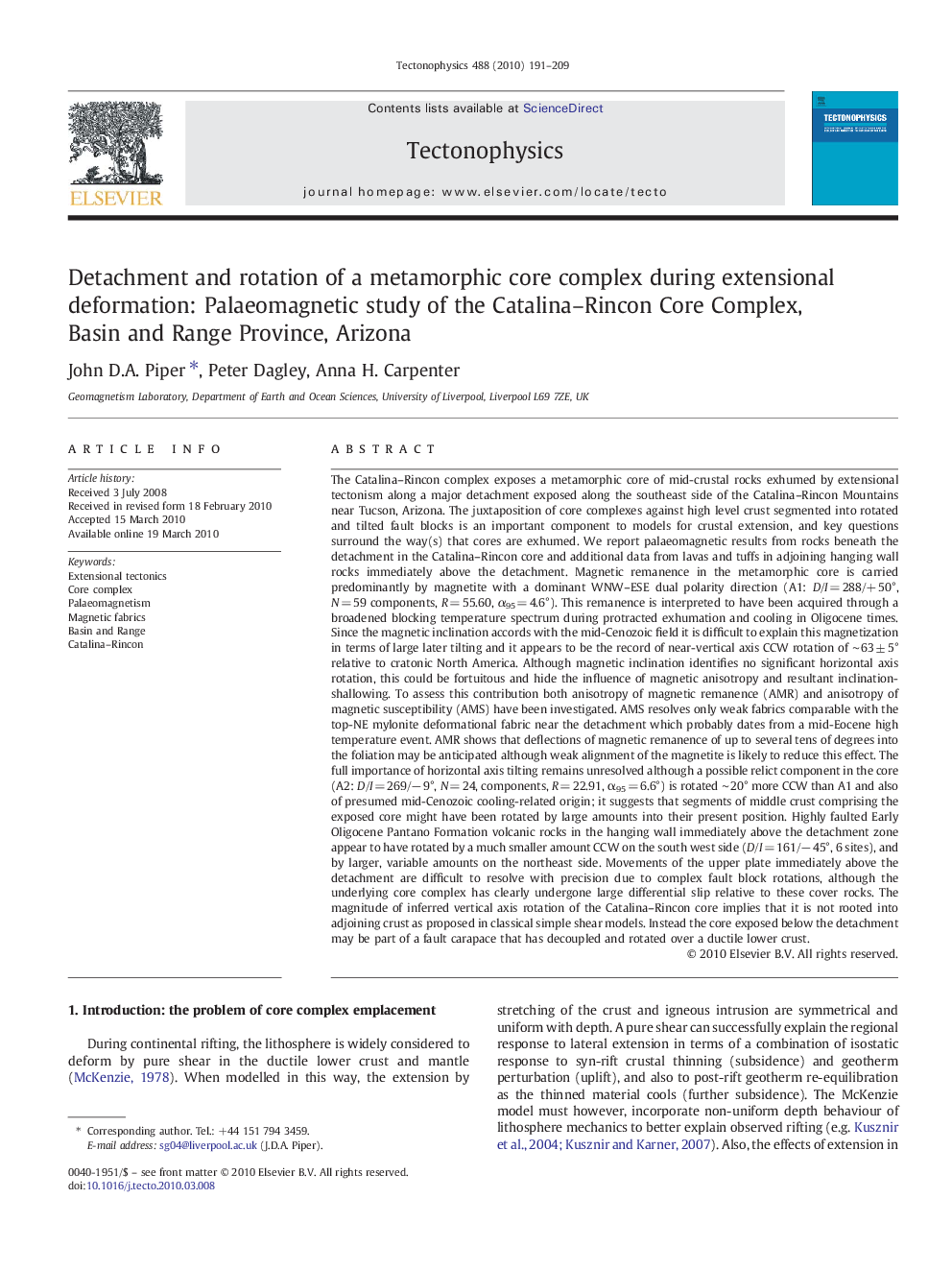| کد مقاله | کد نشریه | سال انتشار | مقاله انگلیسی | نسخه تمام متن |
|---|---|---|---|---|
| 4693563 | 1636867 | 2010 | 19 صفحه PDF | دانلود رایگان |

The Catalina–Rincon complex exposes a metamorphic core of mid-crustal rocks exhumed by extensional tectonism along a major detachment exposed along the southeast side of the Catalina–Rincon Mountains near Tucson, Arizona. The juxtaposition of core complexes against high level crust segmented into rotated and tilted fault blocks is an important component to models for crustal extension, and key questions surround the way(s) that cores are exhumed. We report palaeomagnetic results from rocks beneath the detachment in the Catalina–Rincon core and additional data from lavas and tuffs in adjoining hanging wall rocks immediately above the detachment. Magnetic remanence in the metamorphic core is carried predominantly by magnetite with a dominant WNW–ESE dual polarity direction (A1: D/I = 288/+ 50°, N = 59 components, R = 55.60, α95 = 4.6°). This remanence is interpreted to have been acquired through a broadened blocking temperature spectrum during protracted exhumation and cooling in Oligocene times. Since the magnetic inclination accords with the mid-Cenozoic field it is difficult to explain this magnetization in terms of large later tilting and it appears to be the record of near-vertical axis CCW rotation of ∼ 63 ± 5° relative to cratonic North America. Although magnetic inclination identifies no significant horizontal axis rotation, this could be fortuitous and hide the influence of magnetic anisotropy and resultant inclination-shallowing. To assess this contribution both anisotropy of magnetic remanence (AMR) and anisotropy of magnetic susceptibility (AMS) have been investigated. AMS resolves only weak fabrics comparable with the top-NE mylonite deformational fabric near the detachment which probably dates from a mid-Eocene high temperature event. AMR shows that deflections of magnetic remanence of up to several tens of degrees into the foliation may be anticipated although weak alignment of the magnetite is likely to reduce this effect. The full importance of horizontal axis tilting remains unresolved although a possible relict component in the core (A2: D/I = 269/− 9°, N = 24, components, R = 22.91, α95 = 6.6°) is rotated ∼ 20° more CCW than A1 and also of presumed mid-Cenozoic cooling-related origin; it suggests that segments of middle crust comprising the exposed core might have been rotated by large amounts into their present position. Highly faulted Early Oligocene Pantano Formation volcanic rocks in the hanging wall immediately above the detachment zone appear to have rotated by a much smaller amount CCW on the south west side (D/I = 161/− 45°, 6 sites), and by larger, variable amounts on the northeast side. Movements of the upper plate immediately above the detachment are difficult to resolve with precision due to complex fault block rotations, although the underlying core complex has clearly undergone large differential slip relative to these cover rocks. The magnitude of inferred vertical axis rotation of the Catalina–Rincon core implies that it is not rooted into adjoining crust as proposed in classical simple shear models. Instead the core exposed below the detachment may be part of a fault carapace that has decoupled and rotated over a ductile lower crust.
Journal: Tectonophysics - Volume 488, Issues 1–4, 5 June 2010, Pages 191–209